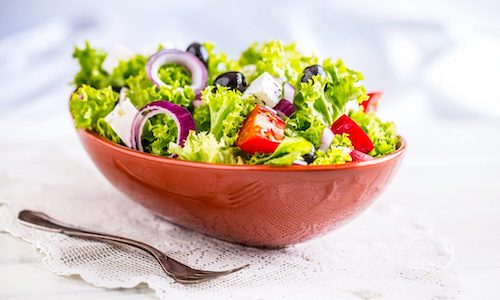Salads have been a popular dish for centuries, and their name originates from the Latin word salat, meaning salt. Originally, salads were simply vegetables seasoned with salt to add flavor. With the evolution of culinary techniques, various salad dressings have been invented, making salads flavorful. Yet, one thing remains constant—salads are primarily made with raw ingredients.
While raw vegetables and fruits are nutritious, they come with risks if not handled correctly. Without proper sterilization, contaminated ingredients can cause stomach problems or even serious foodborne illnesses like gastroenteritis. Commercially produced salads are usually safer due to strict quality control at every step, from sourcing and cleaning to cold storage and packaging. However, homemade salads require careful preparation to minimize risks. Here's how to make a safe and healthy salad at home.
Step 1: Choose Safe Ingredients
- Source your produce wisely: Purchase fruits and vegetables from reputable supermarkets or trusted farmers' markets. Modern greenhouse-grown produce is often safer because field-grown produce can be contaminated by untreated fertilizers or unclean water.
- Inspect your produce: Avoid buying fruits or vegetables with bruises, cuts, or signs of decay, as damaged areas can harbor higher levels of harmful microorganisms.
Step 2: Wash, Peel, and Cut Properly
Proper cleaning and handling are crucial to minimize contamination:
-
Thoroughly wash all produce:
- After washing, ensure all water is drained. Microorganisms thrive in moisture, so drying your produce is key to reducing contamination.
- For vegetables like carrots and cabbages, consider a second wash after cutting to remove surface microbes and juice residues.
-
Use clean tools:
- Sanitize your knives, peelers, and cutting boards before use.
- Minimize damage to fruits and vegetables when peeling or cutting. Excessive cutting exposes more surface area, making the produce more susceptible to microbial growth and spoilage.
-
Cleaning tips for specific vegetables:
- Leafy greens (lettuce, spinach): Separate each leaf and rinse thoroughly under running water. Soaking in saltwater or a baking soda solution for a few minutes can help remove pesticide residues.
- Root vegetables (carrots, potatoes): Scrub thoroughly with a brush to remove dirt. If you’re eating the skin, ensure it's cleaned properly.
- Florets (broccoli, cauliflower): Chop into small pieces and soak in saltwater for 10–15 minutes to eliminate dirt and insects, then rinse under running water.
Step 3: Handle Leftovers Safely
If you don’t finish the salad in one sitting, follow these storage tips to maintain safety:
- Refrigerate promptly: Store leftover salad at 0–5°C to inhibit bacterial growth. An unclean refrigerator can cause cross-contamination, so make sure your fridge is organized and regularly cleaned. Pay special attention to areas like the door seals that can harbor mold.
- Seal properly: Use airtight containers or plastic wrap to prevent exposure to moisture, oxygen, and bacteria.
Common Microorganisms Found in Salads
Raw vegetables and fruits can be contaminated by various microorganisms, including:
-
On vegetables:
- Bacteria: Erwinia, Pseudomonas, Bacillus, and Clostridium species.
- Molds: Botrytis, Rhizopus, and Fusarium species.
-
On fruits:
- Molds: Penicillium, Botrytis, and Aspergillus species.
- Yeast: Commonly found on fruits with high sugar content.
For example, Penicillium mold is a frequent contaminant of fruits, causing soft, watery spots on the peel that turn into blue or green patches of spores, eventually leading to rot.
Final Thoughts
Preparing a safe and nutritious salad at home requires attention to detail. By sourcing high-quality produce, cleaning and handling ingredients carefully, and storing leftovers properly, you can minimize health risks and enjoy fresh, delicious salads without food safety concerns.
Eating a salad may seem simple, but ensuring safety is the most important thing. Follow these steps to make homemade salads safe for your family.



